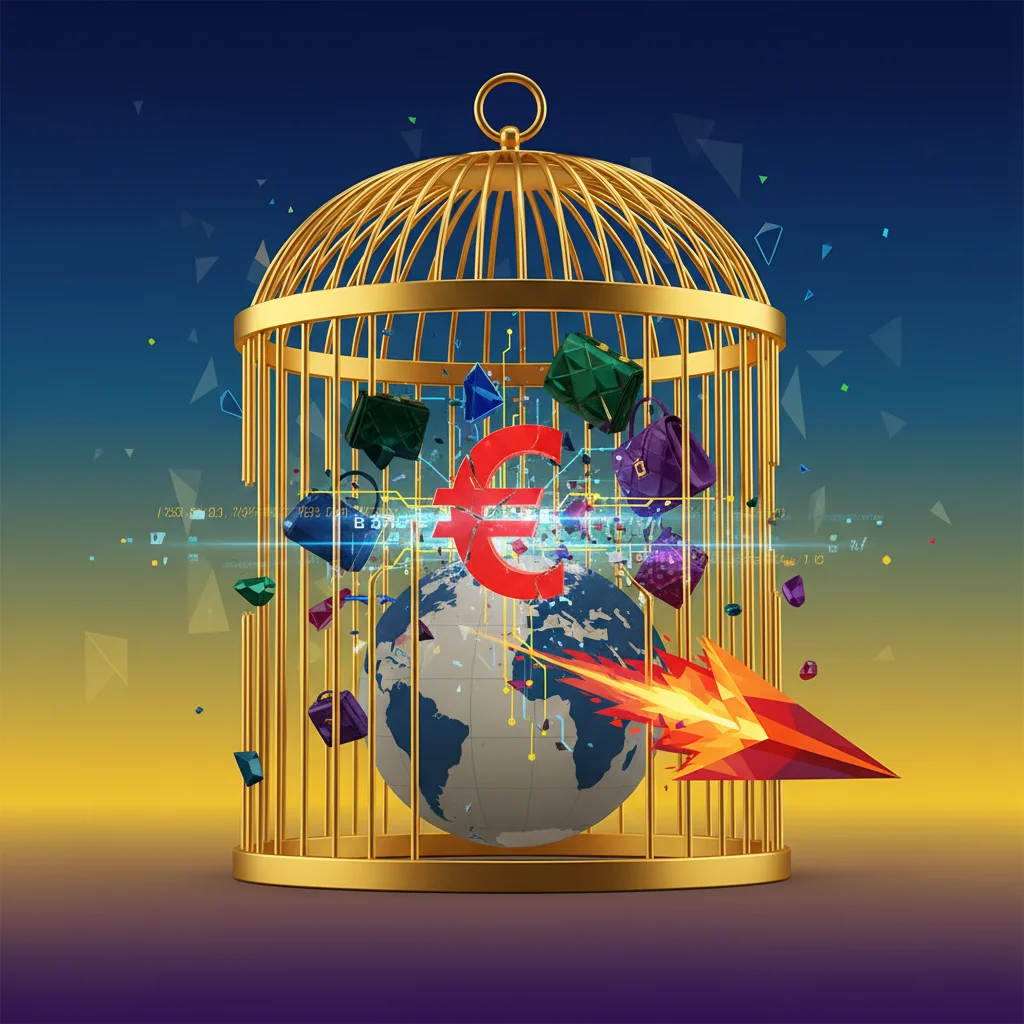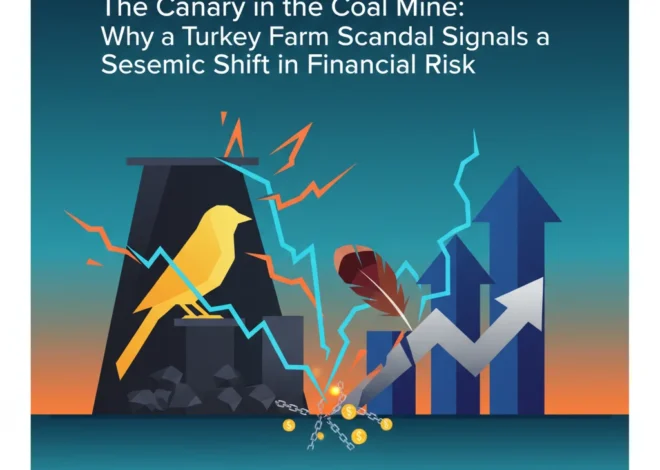
The Gilded Cage: Why the EU’s €157M Fine on Gucci & Co. is a Warning Shot for the Global Economy
The world of high fashion is built on a carefully constructed paradox: mass desire for items of intentional scarcity. A handbag isn’t just a bag; it’s a statement, an investment, a piece of a meticulously crafted brand narrative. A key pillar of this narrative has always been price—unwavering, controlled, and consistent, no matter where you buy it. But what happens when the quest for brand control collides with the fundamental principles of a free market economy? The European Commission has just answered with a resounding €157 million penalty.
In a move that sent ripples through the luxury sector, Brussels has fined iconic brands Gucci, Chloé, and Loewe for engaging in anti-competitive practices, specifically for illegally controlling the resale prices of their products at independent, multi-brand retailers. This isn’t merely a slap on the wrist; it’s a direct challenge to a long-standing, albeit shadowy, industry practice. The decision exposes a critical tension between a brand’s right to protect its image and the consumer’s right to a competitive marketplace, with profound implications for investors, the future of retail, and the very definition of value in our modern economy.
The Anatomy of an Antitrust Breach
At the heart of the EU’s case is a practice known as Resale Price Maintenance (RPM). In layman’s terms, this is when a manufacturer dictates the minimum price at which a retailer can sell its products. While brands can suggest a retail price (MSRP), forcing retailers to adhere to it under threat of penalty is illegal in many jurisdictions, including the EU, as it stifles competition.
The investigation revealed that these luxury houses, owned by corporate giants Kering, Richemont, and LVMH, were not merely suggesting prices. They were actively enforcing them, creating a rigid price structure that eliminated competition among retailers. According to the European Commission’s findings, the brands engaged in a variety of tactics to ensure independent retailers toed the line, including:
- Monitoring resale prices and demanding adjustments.
- Threatening to reduce or halt the supply of coveted products to non-compliant retailers.
- Withholding new collections as a punitive measure.
This systematic approach effectively created a cartel-like environment where consumers were denied the benefits of price competition, paying artificially inflated prices regardless of which store they visited. The fines were allocated based on the severity and duration of the infringements, as detailed below.
Breakdown of the EU Fines by Brand and Parent Company
| Brand | Parent Company | Fine (Approximate) | Key Allegation |
|---|---|---|---|
| Gucci | Kering | €89 million | Controlling resale prices for leather goods, footwear, and accessories. |
| Chloé | Richemont | €42 million | Imposing fixed or minimum resale prices on retailers. |
| Loewe | LVMH | €26 million | Restricting retailers from offering discounts on its products. |
The parent companies, despite their immense financial power, cooperated with the investigation, which led to a reduction in the potential fines. However, the message is clear: the era of unchecked price control is over.
The Economics of Exclusivity vs. The Free Market
To understand the significance of this ruling, one must appreciate the core business model of luxury. Unlike fast-moving consumer goods, where success is driven by volume and competitive pricing, luxury thrives on the perception of enduring value and exclusivity. As experts in luxury brand management often note, price is a key signal of quality and desirability. A discounted Gucci bag, in the eyes of the brand manager, is a devalued Gucci bag. This damages the brand’s equity and erodes the trust of full-price customers.
From a classical economics perspective, however, this practice is deeply problematic. The EU’s antitrust laws are designed to protect market efficiency and consumer welfare. When retailers are free to set their own prices, they compete on service, efficiency, and margin, ultimately leading to better value for the consumer. RPM short-circuits this entire process. It creates an artificial price floor, ensuring that even the most efficient retailer cannot pass savings on to the customer. This fundamentally distorts the market and harms the broader economy by misallocating resources and reducing consumer purchasing power.
What’s particularly fascinating is how this intersects with emerging financial technology. Could blockchain offer a path forward? Imagine a future where luxury goods are tied to a unique digital token (NFT) on a blockchain, verifying authenticity and tracking ownership history. This could preserve an item’s value and provenance—the very things brands want to protect—without resorting to illegal price-fixing. Such a fintech solution would embrace transparency rather than fighting it. This fine might just be the catalyst that forces these legacy giants to innovate their business models, moving from coercive control to tech-enabled value preservation. The collision of high fashion and high tech is inevitable.
The Investor’s Angle: Re-evaluating Risk in the Luxury Stock Market
For those involved in finance and investing, this news warrants more than a passing glance. While a €157 million fine is pocket change for behemoths like LVMH and Kering, whose revenues are in the tens of billions, the true cost lies not in the penalty but in the precedent.
Here’s how investors should be analyzing the fallout:
- Increased Regulatory Risk: This ruling signals that regulators are now paying close attention to the luxury sector’s unique business practices. Investors must now price in a higher degree of regulatory risk for luxury stocks. What other “standard industry practices” might come under scrutiny next? This adds a new layer of uncertainty to stock market valuations in the sector.
- Governance (The ‘G’ in ESG): This is a classic corporate governance failure. The systematic, multi-year nature of the price-fixing scheme points to a breakdown in compliance and ethical oversight. For the growing number of investors who weigh Environmental, Social, and Governance (ESG) factors, this is a significant red flag. It raises questions about the internal controls and ethical culture at these celebrated firms.
- Margin Pressure: The long-term implication is potential pressure on profit margins. If brands can no longer dictate resale prices, a more competitive retail environment could emerge, especially online. While luxury brands have immense pricing power, they may have to offer better terms to their wholesale partners or accept that some level of discounting is inevitable, which could impact the profitability that investors have come to expect. Any changes to the dynamics of luxury goods trading will be watched closely.
The smart money in the investing world won’t be looking at the fine itself, but at how these companies adapt their distribution and pricing strategies in response. The ability to innovate and maintain brand equity within the bounds of the law will separate the winners from the losers in the next decade of luxury.
The Ripple Effect Across the Financial and Retail Ecosystem
The impact of this decision extends far beyond the boardrooms of Paris and Milan. It creates a new reality for the entire value chain, from independent boutiques to the financial technology platforms that power modern commerce.
For independent retailers, this is a double-edged sword. On one hand, they gain the freedom to use pricing as a competitive tool, potentially running promotions to drive traffic and clear inventory. On the other, it could trigger price wars that erode margins for everyone. Furthermore, brands may retaliate in more subtle, legally gray ways, such as prioritizing their own direct-to-consumer (DTC) channels or creating exclusive collections that are never offered to third-party retailers.
This push towards DTC is intrinsically linked to the rise of financial technology. E-commerce platforms, sophisticated inventory management systems, and digital payment solutions have empowered brands to control the entire customer journey, from discovery to purchase. This ruling will likely accelerate the trend of brands pulling back from wholesale partnerships in favor of their own online and physical stores, a strategic pivot that requires significant investment in banking relationships, technology, and logistics.
A New Chapter or Just a Footnote?
The critical question is whether this is a one-off enforcement action or the beginning of a global regulatory crackdown on the luxury industry. The EU has often been a trendsetter in regulation, from data privacy (GDPR) to digital markets (DMA). Regulators in the United States and Asia will undoubtedly be watching this case closely. If they follow suit, the entire global distribution model for luxury goods could be upended.
This case serves as a powerful reminder that no industry, no matter how glamorous or profitable, is above the fundamental laws of the market. The €157 million fine is not just a cost of doing business; it’s an expensive lesson in the principles of economics. The delicate balance between building a brand and breaking the law has just been recalibrated, and the entire world of finance, from the trading floor to the venture capital meeting, is taking note. The future of luxury will belong to those who can build desire without dictating its price.


